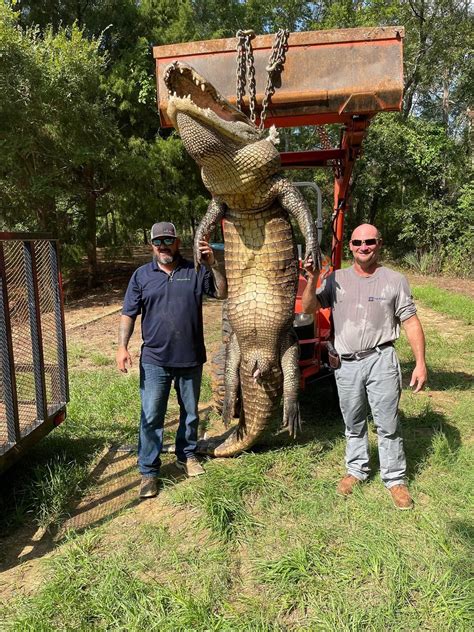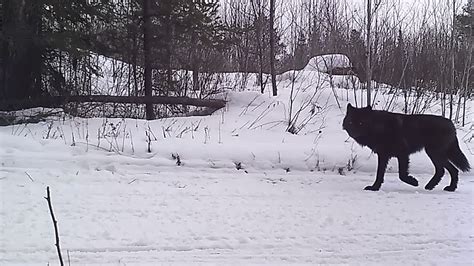
An extremely rare sighting of a wolverine pack, including a mother and her three kits, has been captured on trail cameras in Yellowstone National Park, stunning wildlife experts and offering a unique glimpse into the elusive species’ family life.
Yellowstone National Park has documented an extremely rare event: a wolverine family, consisting of a mother and her three kits, captured on remote trail cameras. This marks only the second confirmed breeding record within the park’s boundaries, the first documented in 2006, and provides invaluable insight into the secretive lives of these solitary creatures. The images were captured in the park’s southern region. Experts are hailing the discovery as a significant contribution to understanding wolverine ecology and conservation.
“It’s really, really special,” said Dr. Stephanie Simek, a wolverine biologist with the Wildlife Conservation Society, who reviewed the footage. “To have a confirmed pack like this is incredibly rare. It gives us a valuable look into wolverine behavior and family dynamics, things we don’t often get to see.”
The trail cameras, part of an ongoing monitoring program, inadvertently captured the wolverine family over several weeks. Park officials believe the kits were born earlier this year. Wolverines, the largest members of the weasel family, are notoriously difficult to study due to their low population densities, vast territories, and preference for high-elevation habitats. This makes direct observation challenging, and reliance on methods like remote cameras and snow tracking essential for researchers.
“Wolverines are a species of conservation concern in many parts of their range,” stated a Yellowstone National Park spokesperson. “This sighting reinforces the importance of protecting large, connected landscapes for their survival. It also highlights the effectiveness of using non-invasive monitoring techniques to study these elusive animals.”
The discovery is particularly significant because wolverine populations have faced numerous threats, including habitat loss, climate change, and trapping. The animals are highly sensitive to changes in snowpack, which they rely on for denning and caching food. As climate change continues to reduce snow cover in mountainous regions, wolverine populations are expected to decline.
The Yellowstone National Park is part of the Southern Rockies and Greater Yellowstone Ecosystem, a key area for wolverine conservation. The park’s large size and relatively intact habitat provide crucial refuge for the species. However, maintaining connectivity between Yellowstone and other suitable habitats is essential for ensuring long-term viability.
The remote cameras that captured the images are placed strategically throughout the park to monitor wildlife activity. These cameras are triggered by motion and heat, automatically taking photographs or videos when an animal passes by. The data collected from these cameras is used to track population trends, assess habitat use, and identify potential threats to wildlife. The locations of the cameras are kept confidential to prevent disturbance to the animals.
The confirmation of a wolverine family in Yellowstone underscores the park’s role as a vital sanctuary for wildlife. It also emphasizes the importance of continued research and monitoring to understand and protect these fascinating creatures. The data gathered from this discovery will contribute to ongoing conservation efforts aimed at ensuring the long-term survival of wolverines in the region. The park encourages visitors to report any wolverine sightings to park officials to assist in ongoing monitoring efforts. Visitors should also maintain a safe distance from wildlife and avoid disturbing their habitat.
The images have sparked considerable excitement among wildlife enthusiasts and conservationists alike. They offer a rare glimpse into the private lives of a species that is typically shrouded in mystery. The hope is that this discovery will raise awareness about the challenges facing wolverines and inspire greater efforts to protect their habitat. The park is continuing to analyze the data collected from the trail cameras to learn more about the wolverine family’s behavior and movements. This information will be used to inform future management decisions and conservation strategies.
Dr. Simek added, “This is a reminder that there are still many things we don’t know about wolverines. Continued research and monitoring are essential for understanding their ecology and ensuring their survival in a changing world.” The finding is an exciting benchmark for research efforts, the park said.
Further Details on Wolverines:
Wolverines ( Gulo gulo) are the largest terrestrial members of the Mustelidae family, which includes weasels, badgers, otters, and ferrets. They are powerfully built animals, adapted to life in harsh, cold environments. Wolverines are characterized by their thick, dark fur, short legs, and a broad head with small eyes and ears. They have large paws with non-retractile claws, which help them to travel across snow and ice.
These animals are found in high-latitude regions of North America, Europe, and Asia. In North America, they primarily inhabit the Rocky Mountains, the Cascades, and Alaska. Wolverines are solitary animals, with males and females typically only coming together during the breeding season. They are territorial, with males defending large home ranges that can overlap with the territories of several females.
Wolverines are opportunistic scavengers and predators. They feed on a wide variety of foods, including carrion, small mammals, birds, eggs, and insects. They are also capable of taking down larger prey, such as deer and caribou, especially when the animals are weakened by winter conditions. Wolverines are known for their incredible strength and tenacity, which allows them to compete with other predators, such as wolves and bears, for food.
Wolverine reproduction is slow, with females typically giving birth to one to three kits in a snow den. The kits remain in the den for several months, relying on their mother for food and protection. They become independent at around one year of age. Wolverines have a relatively long lifespan, with some individuals living for up to 13 years in the wild.
Threats to Wolverines:
Wolverine populations face a number of threats, including habitat loss, climate change, and trapping. Habitat loss is primarily due to logging, mining, and development. Climate change is a major concern, as wolverines rely on snow for denning and caching food. As snowpack decreases due to warming temperatures, wolverine populations are expected to decline. Trapping is also a threat, as wolverines are sometimes targeted for their fur.
In the United States, wolverines are listed as a threatened species under the Endangered Species Act in the contiguous United States (except Alaska). Conservation efforts are focused on protecting wolverine habitat, reducing trapping, and mitigating the impacts of climate change.
Yellowstone National Park’s Role:
Yellowstone National Park plays a critical role in wolverine conservation. The park’s large size and relatively intact habitat provide crucial refuge for the species. The park also conducts ongoing research and monitoring to understand wolverine ecology and assess the effectiveness of conservation efforts. The recent discovery of a wolverine family in Yellowstone underscores the importance of the park as a vital sanctuary for wildlife. It also highlights the need for continued research and monitoring to ensure the long-term survival of wolverines in the region.
Conservation Strategies and Efforts:
Conserving wolverines requires a multi-faceted approach that addresses the various threats they face. Some of the key conservation strategies and efforts include:
- Habitat Protection: Protecting and maintaining large, connected landscapes is essential for wolverine survival. This involves working with landowners, government agencies, and other stakeholders to limit development and promote sustainable land management practices.
- Climate Change Mitigation: Reducing greenhouse gas emissions is crucial for mitigating the impacts of climate change on wolverine populations. This requires a global effort to transition to clean energy sources and reduce deforestation.
- Trapping Regulations: Implementing and enforcing trapping regulations can help to reduce wolverine mortality. This may involve setting quotas, restricting trapping seasons, and prohibiting the use of certain types of traps.
- Research and Monitoring: Continued research and monitoring are essential for understanding wolverine ecology and assessing the effectiveness of conservation efforts. This includes tracking population trends, studying habitat use, and identifying potential threats.
- Public Education: Educating the public about wolverines and the challenges they face can help to raise awareness and inspire greater efforts to protect them. This may involve developing educational materials, conducting outreach events, and partnering with local communities.
- Connectivity Conservation: Wolverines require large, connected landscapes to thrive. Maintaining and restoring connectivity between suitable habitats is essential for ensuring their long-term survival. This may involve establishing wildlife corridors, removing barriers to movement, and promoting habitat restoration.
- Collaboration and Partnerships: Wolverine conservation requires collaboration and partnerships among various stakeholders, including government agencies, conservation organizations, researchers, landowners, and local communities. By working together, these stakeholders can develop and implement effective conservation strategies that benefit wolverines and other wildlife.
The Importance of Citizen Science:
Citizen science plays an important role in wolverine conservation. Members of the public can contribute to research and monitoring efforts by reporting wolverine sightings, collecting data, and participating in citizen science projects. These efforts can help to expand our knowledge of wolverine ecology and inform conservation decisions.
Implications for Future Research:
The discovery of the wolverine family in Yellowstone National Park has important implications for future research. It provides a unique opportunity to study wolverine family dynamics, habitat use, and behavior. Researchers can use this information to develop more effective conservation strategies and to better understand the challenges facing wolverines in a changing world.
Future research efforts may focus on:
- Monitoring the wolverine family’s movements and habitat use using GPS collars or other tracking devices.
- Studying the kits’ development and survival rates.
- Assessing the impacts of climate change on the wolverine family’s habitat and food resources.
- Investigating the genetic diversity of wolverines in Yellowstone National Park.
- Evaluating the effectiveness of different conservation strategies for wolverines.
By continuing to study wolverines and their environment, researchers can gain a better understanding of these fascinating creatures and develop more effective strategies for ensuring their long-term survival. The images from Yellowstone provide a positive outlook for conservation efforts.
FAQ about the Yellowstone Wolverine Sighting:
Q1: How rare is it to see a wolverine family pack in Yellowstone National Park?
A: It is extremely rare. According to park officials, this is only the second confirmed breeding record within the park’s boundaries. The first was documented in 2006. Dr. Stephanie Simek, a wolverine biologist, called it “really, really special” and noted that “to have a confirmed pack like this is incredibly rare.”
Q2: Where in Yellowstone National Park were the wolverine family spotted?
A: The wolverine family, consisting of a mother and her three kits, was captured on trail cameras in the southern region of Yellowstone National Park. The specific location details are kept confidential to protect the animals and their habitat.
Q3: What threats do wolverines face, and why are they considered a species of conservation concern?
A: Wolverines face numerous threats, including habitat loss due to logging, mining, and development; climate change, which reduces the snowpack they rely on for denning and food caching; and trapping for their fur. These factors, combined with their low population densities and vast territories, make them a species of conservation concern in many parts of their range.
Q4: How are trail cameras used to study wolverines and other wildlife in Yellowstone?
A: Trail cameras are placed strategically throughout the park to monitor wildlife activity. They are triggered by motion and heat, automatically taking photographs or videos when an animal passes by. The data collected from these cameras is used to track population trends, assess habitat use, and identify potential threats to wildlife. The cameras are a non-invasive monitoring technique, essential for studying elusive animals like wolverines.
Q5: What can visitors to Yellowstone National Park do to help protect wolverines?
A: Visitors can help protect wolverines by reporting any sightings to park officials, maintaining a safe distance from wildlife, and avoiding disturbing their habitat. Supporting conservation efforts and advocating for policies that protect wolverine habitat are also crucial. The park encourages visitors to be mindful of their impact on the environment and to follow park regulations to minimize disturbance to wildlife.
Expanded Article:
The stunning revelation of a wolverine family thriving within Yellowstone National Park has sent ripples of excitement and renewed hope throughout the conservation community. The event, captured by strategically placed trail cameras, offers a rare and intimate glimpse into the lives of these notoriously elusive creatures, bolstering ongoing efforts to understand and protect their fragile populations. This marks only the second confirmed instance of wolverine breeding within the park, the first being nearly two decades ago in 2006, underscoring the significance of this discovery for ecological research and conservation strategies.
Dr. Stephanie Simek of the Wildlife Conservation Society, a leading expert on wolverine ecology, expressed her enthusiasm, stating, “It’s really, really special. To have a confirmed pack like this is incredibly rare. It gives us a valuable look into wolverine behavior and family dynamics, things we don’t often get to see.” Her words encapsulate the broader sentiment within the scientific community, highlighting the invaluable data that can be gleaned from such a rare occurrence.
Wolverines, scientifically classified as Gulo gulo, are the largest terrestrial members of the weasel family (Mustelidae), characterized by their stocky build, dense fur, and fierce independence. Their physical adaptations, including large paws with non-retractile claws, allow them to navigate and thrive in harsh, snowy environments. As opportunistic scavengers and predators, wolverines play a crucial role in maintaining the ecological balance of their high-elevation habitats, feeding on carrion, small mammals, and occasionally even larger prey.
The challenges of studying wolverines are manifold, stemming from their low population densities, vast home ranges, and preference for remote, rugged terrain. Direct observation is exceedingly difficult, making the use of remote monitoring techniques, such as trail cameras and snow tracking, essential for gathering data on their behavior, distribution, and population dynamics. The serendipitous capture of the wolverine family in Yellowstone underscores the efficacy of these non-invasive methods and their potential for providing critical insights into the lives of these secretive animals.
The wolverine’s conservation status is a matter of growing concern, particularly in the face of climate change and habitat degradation. Their reliance on snowpack for denning and food caching makes them particularly vulnerable to the effects of rising temperatures and altered precipitation patterns. As snow cover diminishes, wolverines face increased challenges in securing suitable den sites and accessing food resources, potentially leading to population declines.
The discovery of the breeding pack in Yellowstone National Park highlights the park’s crucial role as a refuge for wolverines and other wildlife. Its vast size, relatively intact ecosystems, and ongoing conservation efforts provide a sanctuary for these animals, allowing them to persist despite the mounting pressures in the surrounding landscape. However, maintaining connectivity between Yellowstone and other suitable habitats is essential for ensuring the long-term viability of wolverine populations in the region.
The Yellowstone National Park spokesperson emphasized the park’s commitment to wolverine conservation, stating, “Wolverines are a species of conservation concern in many parts of their range. This sighting reinforces the importance of protecting large, connected landscapes for their survival. It also highlights the effectiveness of using non-invasive monitoring techniques to study these elusive animals.” The park’s continued investment in research and monitoring is crucial for understanding the threats facing wolverines and developing effective strategies to mitigate them.
The trail cameras that captured the images of the wolverine family are part of a broader monitoring program aimed at tracking wildlife activity throughout the park. These cameras are strategically placed in areas where wolverines are known or suspected to occur, and they are programmed to automatically capture images or videos when motion and heat are detected. The data collected from these cameras are analyzed by park biologists to assess population trends, habitat use, and potential threats to wildlife. The locations of the cameras are kept confidential to minimize disturbance to the animals and their habitat.
The discovery of the wolverine family has sparked considerable interest among wildlife enthusiasts and conservationists worldwide. The images offer a rare glimpse into the private lives of a species that is often shrouded in mystery, and they serve as a reminder of the importance of protecting these magnificent creatures and their wild habitats. The hope is that this discovery will raise awareness about the challenges facing wolverines and inspire greater efforts to conserve them for future generations.
The park is continuing to analyze the data collected from the trail cameras to gain a deeper understanding of the wolverine family’s behavior and movements. This information will be used to inform future management decisions and conservation strategies aimed at ensuring the long-term survival of wolverines in the region.
Dr. Simek emphasized the need for continued research and monitoring, stating, “This is a reminder that there are still many things we don’t know about wolverines. Continued research and monitoring are essential for understanding their ecology and ensuring their survival in a changing world.” Her words underscore the ongoing commitment of scientists and conservationists to unravel the mysteries of wolverine life and to protect these remarkable animals from the threats they face.
Wolverine conservation requires a multifaceted approach that addresses the various challenges they face, including habitat loss, climate change, and human disturbance. Key conservation strategies include protecting and restoring wolverine habitat, mitigating the impacts of climate change, regulating trapping and hunting, and promoting public awareness and education. Collaboration among government agencies, conservation organizations, researchers, and local communities is essential for achieving these goals.
The role of citizen science in wolverine conservation is also becoming increasingly important. Members of the public can contribute to research and monitoring efforts by reporting wolverine sightings, collecting data, and participating in citizen science projects. These efforts can help to expand our knowledge of wolverine ecology and inform conservation decisions.
The implications of the Yellowstone wolverine sighting for future research are significant. The discovery provides a unique opportunity to study wolverine family dynamics, habitat use, and response to environmental changes. Researchers can use this information to develop more effective conservation strategies and to better understand the long-term viability of wolverine populations in the face of increasing environmental pressures.
The future of wolverines depends on our ability to protect their habitat, mitigate the impacts of climate change, and promote coexistence between humans and wildlife. The discovery of the wolverine family in Yellowstone National Park serves as a powerful reminder of the importance of these efforts and the need to continue working towards a future where wolverines can thrive.
The wolverines thrive within a complex ecosystem. These apex predators play a vital role in maintaining the balance of their environment, influencing the populations of their prey and contributing to the overall health of the ecosystem. By studying wolverines, researchers can gain a better understanding of the interconnectedness of life in these mountain landscapes and the importance of protecting biodiversity.
The wolverine’s resilience is a testament to its adaptability and its ability to survive in harsh conditions. However, even the most resilient species are vulnerable to the impacts of human activities and climate change. It is our responsibility to protect these magnificent animals and their wild habitats, ensuring that they continue to roam the mountains for generations to come.
The discovery of the wolverine family in Yellowstone National Park is a cause for celebration and a call to action. It reminds us of the beauty and wonder of the natural world and the importance of protecting it for future generations. By working together, we can ensure that wolverines and other wildlife continue to thrive in Yellowstone and other wild places around the world. FAQ about the Yellowstone Wolverine Sighting (Extended):
Q1: What is a wolverine, and what are its key characteristics?
A: Wolverines (Gulo gulo) are the largest terrestrial members of the weasel family (Mustelidae). They are powerfully built animals adapted to cold, snowy environments. Key characteristics include a stocky body, dense dark fur, short legs, a broad head with small eyes and ears, and large paws with non-retractile claws for navigating snow and ice. They are opportunistic scavengers and predators, known for their strength and tenacity.
Q2: Where are wolverines typically found, and what kind of habitat do they prefer?
A: Wolverines are found in high-latitude regions of North America, Europe, and Asia. In North America, they primarily inhabit the Rocky Mountains, the Cascades, and Alaska. They prefer high-elevation habitats with abundant snow cover, which they rely on for denning and caching food.
Q3: What are the primary threats to wolverine populations, and why are they considered vulnerable?
A: The primary threats to wolverine populations include habitat loss (due to logging, mining, and development), climate change (which reduces snowpack), and trapping. Wolverines are considered vulnerable due to their low population densities, large home ranges, slow reproductive rates, and sensitivity to environmental changes.
Q4: How do researchers study wolverines, given their elusive nature and remote habitats?
A: Researchers study wolverines using a variety of methods, including remote monitoring techniques such as trail cameras and snow tracking. Trail cameras are strategically placed to capture images or videos of wolverines, while snow tracking involves following wolverine tracks in the snow to gather information about their movements and behavior. GPS collars are sometimes used to track individual wolverines.
Q5: What is the significance of the Yellowstone National Park sighting for wolverine conservation efforts?
A: The Yellowstone sighting is significant because it confirms wolverine breeding within the park, highlighting its importance as a refuge for the species. It underscores the need to protect large, connected landscapes for wolverine survival and demonstrates the effectiveness of non-invasive monitoring techniques. It also raises awareness about the challenges facing wolverines and inspires greater conservation efforts.
Q6: How does climate change specifically impact wolverine populations?
A: Climate change impacts wolverine populations primarily through the reduction of snowpack. Wolverines rely on stable snowpack for building dens, providing insulation for their young, and caching food. Reduced snowpack makes it harder for them to find suitable denning sites, increases the risk of den collapse, and reduces their ability to store food for later consumption. Changes in snowpack also affect the availability of prey species.
Q7: What are some specific actions being taken to conserve wolverines and their habitat?
A: Specific actions being taken to conserve wolverines include: Habitat protection (limiting development and promoting sustainable land management), climate change mitigation (reducing greenhouse gas emissions), trapping regulations (setting quotas and restricting trapping seasons), research and monitoring (tracking population trends and studying habitat use), and public education (raising awareness about wolverines).
Q8: What is the role of Yellowstone National Park in wolverine conservation?
A: Yellowstone National Park plays a crucial role in wolverine conservation by providing a large, relatively intact habitat for the species. The park conducts ongoing research and monitoring to understand wolverine ecology and assess the effectiveness of conservation efforts. The park also protects wolverines from hunting and trapping within its boundaries.
Q9: How can the public contribute to wolverine conservation efforts?
A: The public can contribute to wolverine conservation efforts by reporting wolverine sightings to park officials or conservation organizations, supporting conservation organizations that work to protect wolverines, advocating for policies that protect wolverine habitat, reducing their carbon footprint to mitigate climate change, and educating others about wolverines and the threats they face.
Q10: What are the potential long-term consequences if wolverine populations continue to decline?
A: If wolverine populations continue to decline, there could be significant ecological consequences. As apex predators, wolverines play a role in regulating prey populations and maintaining ecosystem health. Their decline could lead to imbalances in the food web and potentially affect other species. It would also represent a loss of biodiversity and the cultural value associated with these iconic animals. The loss of wolverines would signal a broader failure to protect wild places and the species that depend on them.









